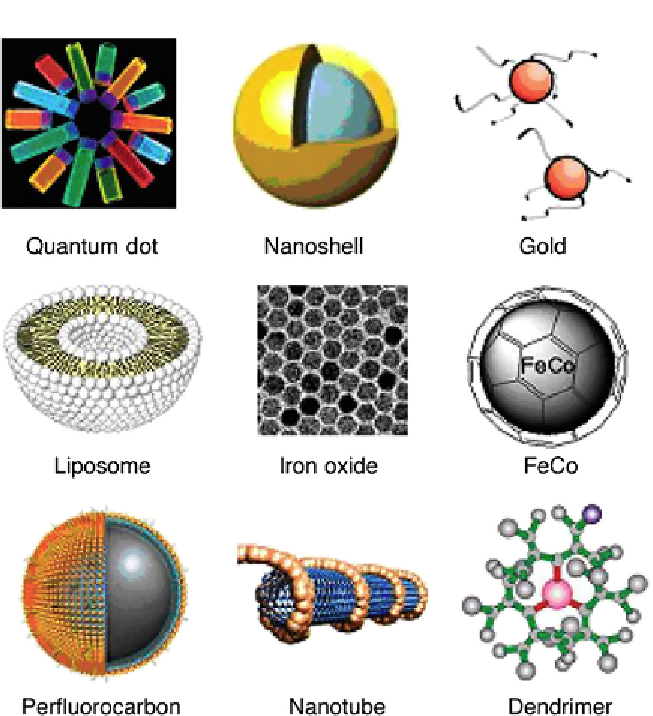Biology Reference
In-Depth Information
Figure 9.2
Nanoparticles currently synthesized for biomedical applications. These include
metallic, semiconductor and organic molecule nanomaterials of a variety of shapes, sizes,
and structures. Source:
Figure 5 from Ref.
26
. Reprinted with permission. (Originally reprinted
with permission of the Wiley Publishing Company, Cai et al. Small 2007;
3
:1840-1854.)
(For
color version of this igure, the reader is referred to the online version of this topic.)
When dispersed in solution, gold NPs are red in color due to strong
localized surface plasmon resonance (SPR). However, the color is highly
dependent upon the interparticle distance. A distinct color change from red
to blue is observed when particles aggregate such that the NPs are separated
by less than 2.5 times their diameter due to interparticle plasmon coupling.
This property has been widely exploited for colorimetric biodetection.
2
The color change of AuNPs is not the only property making them use-
ful for biological detection. In addition to their unique optical properties,

Search WWH ::

Custom Search